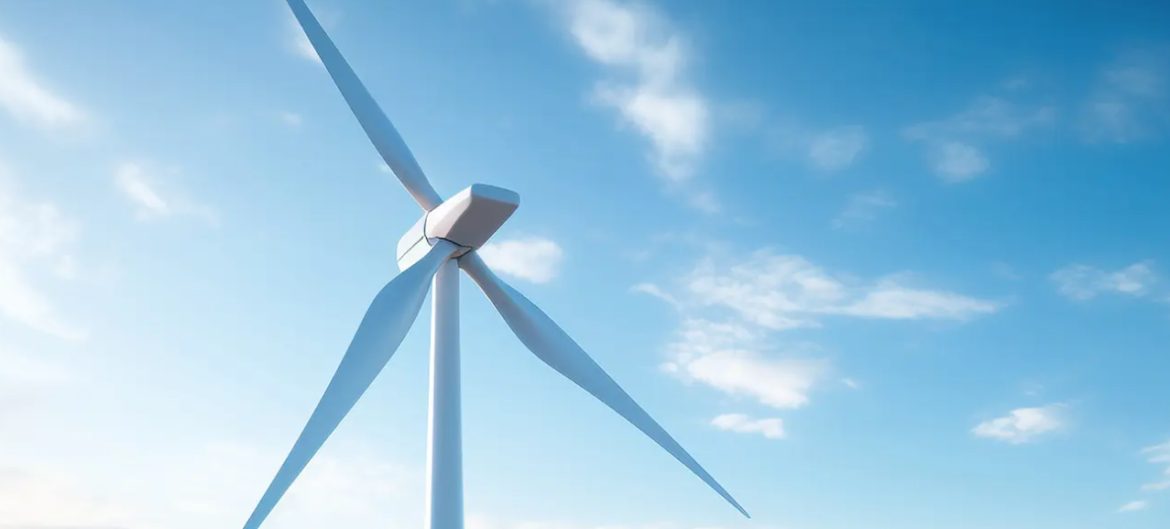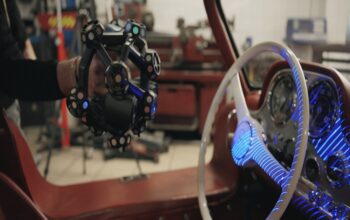The wind power industry has witnessed tremendous growth over the past few decades, driven by the global push towards renewable energy sources.
Wind turbine foundations are critical components, providing the necessary support for the turbine towers to capture wind energy effectively.
The quality of these foundations is essential, and it all begins with the mould used to create them. Ensuring the precision and accuracy of this mould is important for the subsequent installation and operation of the wind power generator.
Introduction of the Client
Our client is a leading manufacturer in the wind power industry. They are dedicated to maintaining the highest standards of quality and precision in their manufacturing processes.
The mould for the wind turbine foundation is a crucial element in their production line, and they sought a reliable, accurate, and efficient method to inspect these moulds.
The Features of the Mold to be Inspected
The mold for the wind turbine foundation is characterized by its large, curved, and free-form surfaces. These curved geometries are challenging to capture accurately using traditional measurement methods.
The mould’s dimensions and shape directly impact the quality of the wind turbine foundation, making precise inspection vital. Additionally, the mold has intricate features that must be measured accurately to ensure the proper fit and function of the final product.

Limits of Previous Measurement Methods
Previous measurement methods struggled to provide the comprehensive data needed for accurate inspection of the wind turbine foundation mold. Manual measurements were prone to human error and could not efficiently capture the mold’s complex geometries.
Coordinate Measuring Machines (CMMs), while more accurate, were limited by their size and immobility, making them unsuitable for large molds that need on-site inspection.
These methods also lacked the ability to quickly and accurately measure large curved surfaces and intricate details simultaneously.
3D Scanning Challenges
Scanning the mold for the wind turbine foundation presents its own set of challenges. The large size and complex shapes require a scanning solution that can cover extensive areas quickly and accurately.
The scanning device must be portable and reliable enough to perform in varying workshop conditions without compromising accuracy. Additionally, it must be able to handle the mold’s intricate features and free-form surfaces with precision.
Scantech’s 3D Solutions
Scantech’s KSCAN-Magic 3D laser scanner offers a comprehensive solution to these challenges. The KSCAN-Magic combines built-in photogrammetry and laser scanning capabilities, providing a versatile and powerful tool for inspecting large and complex molds.

Key Benefits of KSCAN-Magic:
Five Operating Modes: The KSCAN-Magic offers five different operating modes, allowing it to adapt to various surfaces and structures efficiently. This flexibility is crucial for accurately capturing the mold’s complex geometries.
Portability and Reliability: The scanner is portable and designed for on-site measurement, ensuring accurate data collection regardless of ambient conditions. This feature is particularly beneficial for workshop environments where conditions can vary.
Built-in Photogrammetry: The integrated photogrammetry system reduces accumulated measurement errors, enhancing the overall accuracy of the scanning process.

Laser Scanning Capabilities
The KSCAN-Magic employed advanced infrared laser technology to capture detailed and precise data of the mold’s large curved surfaces and intricate features.
This technology enabled the scanner to measure the inside and outside geometries of the mold and the diameters of simulated circles quickly and accurately.
The ability to capture detailed 3D data of such complex geometries was a significant advantage over traditional measurement methods.

Deviation Analysis and Dimension Analysis
Once the data was captured, it was imported into specialized analysis software for dimensional analysis. This software generated intuitive reports that provide a clear and comprehensive understanding of the mold’s dimensions and any deviations from the desired specifications.
The precise 3D data obtained from the KSCAN-Magic allows for thorough dimension analysis, ensuring that the mold met the necessary standards for producing high-quality wind turbine foundations.

Conclusion
In conclusion, the inspection of the mold for wind turbine foundations is a critical step in ensuring the quality and performance of wind power generators.
Traditional measurement methods fall short in capturing the complex geometries and large sizes of these molds accurately and efficiently. Scantech’s KSCAN-Magic 3D scanner provides a robust solution with its versatile operating modes, portability, and advanced laser scanning capabilities.
By utilizing the KSCAN-Magic, our client can achieve precise and reliable inspection results, ultimately contributing to the production of high-quality wind turbine foundations that meet the stringent demands of the renewable energy industry.









